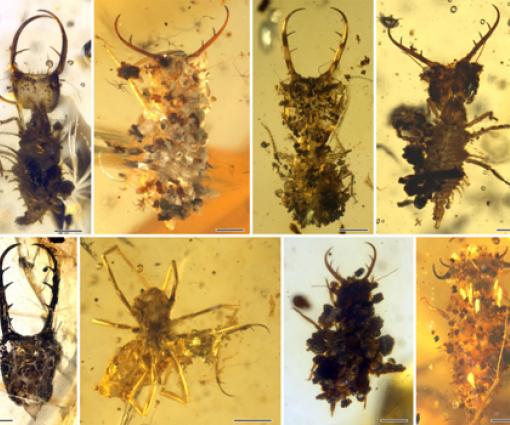June 25, 2016, by Jeanne Rife, New Hampshire Voice

A new fossil study has found that prehistoric insects used to cover themselves in dirt, plant matter and exoskeletons of their prey so they could hunt with better result rate and also to hide themselves from predators.
Nowadays also, this kind of behavior can be seen in some insects. It is the first study that shows how old are the practice of camouflaging is. Study researcher Bo Wang from the Nanjing Institute of Geology and Palaeontology in China said that the findings clear that debris-carrying camouflaging behavior was already present in three groups of insects in the pre-angiospermous world, before the flowering plants came.
Those three groups were- Chrysopidae (green lacewings), Myrmeleontoid (split-footed lacewings and owlflies), and Reduviidae (assassin bugs).
Species- lacewing (Chrysopidae) larvae and the larvae of assassin bugs (Reduviidae) both of them use debris to camouflage themselves. The researchers said that they have come across debris-carrying activity prevalent in the earlier era.
They have found a piece of amber from the early Cretaceous from Spain. For the further assessment, the researchers have assessed over 300,000 Burmese amber fossils and some from Lebanon and France. They have discovered 39 ambers having debris-carrying insects from Myanmar, China, France, and Lebanon.
In many of them, insects’ had strange structures that looked branches. In many of the fossils, insects died with the debris load present on their back and not anywhere else on the body. From this, the researchers mentioned that the debris was not just dirt and was used for some purpose.
The researchers have even found both lacewing and assassin bugs carrying debris. One of the samples from Burma showed an insect that died carrying the exoskeletons of a bark louse and plant louse. As per the researchers, the insect might have made louse its prey in which it ate it’s inside parts and them used its body to disguise for further hunting.
Three assassin-bug larvae have also been found that were having dust and plant matter on their backs. The researchers have also found debris-carrying inantlions (Myrmeleontidae). Antlion larvae dating back to the mid-Cretaceous have also been found. The researchers said they were carrying sand, plant matter, wood particles and bark.
The researchers said that earlier, not many were aware of such behavior of ancient insects, but now the study published in the journal Science would help many more paleontologists to pay more attention.
Wang said that it was surprising to know about such a level of diversity of the fossil camouflage. From the assessment, it has been found that the camouflaging behavior is well-established in the early-to-mid Cretaceous, dating back to 130 million years ago.
“It is baffling to think that these larvae actually had the ability to carry out this behavior. Certainly this behavior requires knowledge and actions that are beyond what we may consider an instinctive response”, said George Poinar, an entomologist at Oregon State University.
Poinar said that these insects used to carry a lot of trash on their backs, but they used to have an interesting structure to support their camouflage coat. To cite an example, some of the insects used to have long filaments or shorter bristles that stick up off their backs that looked like the anchor. But it shall be noticed that not every camouflage act protected the insects.
From: http://nhv.us/node/7397
